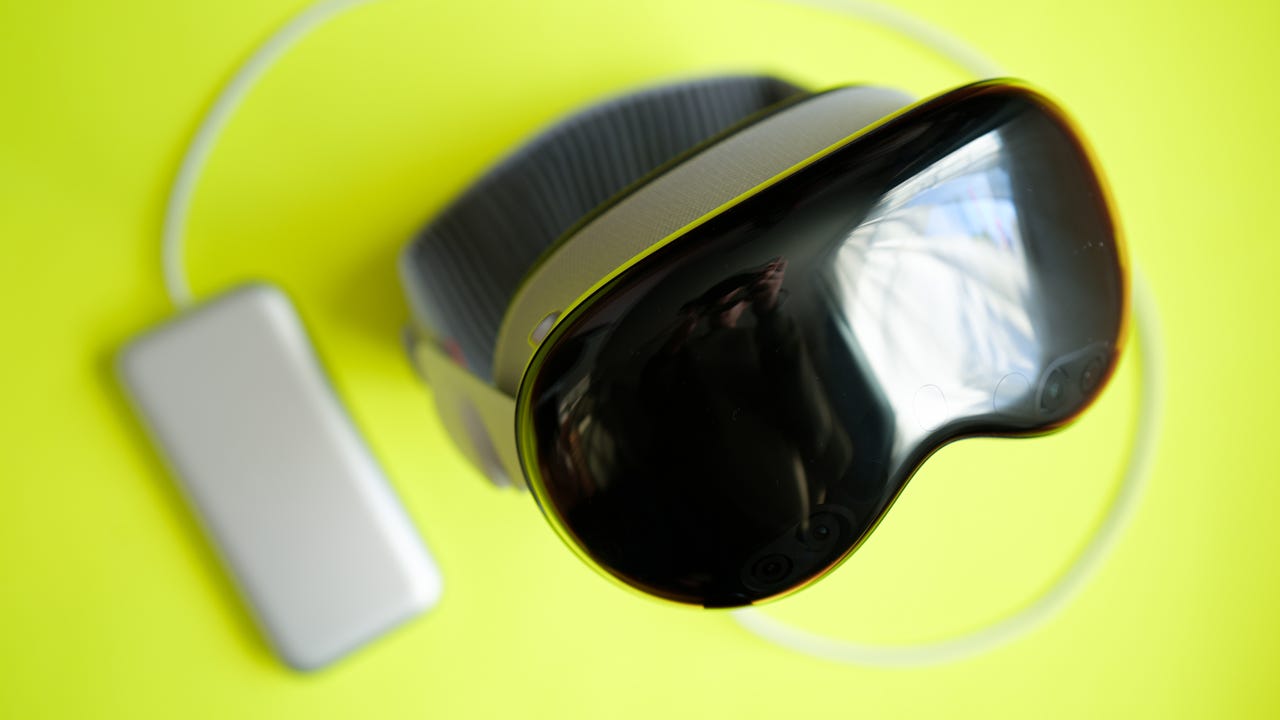
June Wan/ZDNET
Apple’s Vision Pro headset is like a pair of Balenciaga shoes (yes, those shoes); it’s expensive, looks and feels like the future, and you probably shouldn’t buy one. But if you’re one of the thousands to call themselves an early adopter of Apple’s first-ever spatial computer, then this article’s for you.
Also: My 5 biggest takeaways from iFixit’s Apple Vision Pro teardown
Over the past week, I’ve devoted a few too many hours to the Vision Pro, not enough to drive in a car or eat at my favorite restaurant with the device, but enough to know the dos and don’ts of the headset.
I’m covering the “don’ts” today, which are straightforward but still worth noting if you don’t want to accidentally throw $3,500 down the drain. Read on.
1. Should you wear glasses with Vision Pro?
June Wan/ZDNET
As a glasses wearer, this was one of my first questions when Apple unveiled the Vision Pro last year. Tim Cook wears glasses, so the headset has to accommodate the accessory in some type of way, right? The plain and simple answer is no, and there are several reasons why.
At the base level, pushing your glasses between the cushioning of the Vision Pro and having to tighten the head strap — which runs along the sides and above your ears — makes for a very uncomfortable experience. The headset is front-heavy, to begin with, and the tighter fit with glasses only makes things worse.
Also: Don’t buy an Apple Vision Pro headset without this crucial accessory
Doing so may also scratch the inner lenses of the Vision Pro, deteriorating the display quality and eye-tracking capability. The safer and only solution is to buy Zeiss’ prescription lens. They’re not cheap at $150 (or $100 for readers), but you’ll be less likely to damage your $3,500 investment.
2. Keep the battery pack mounted at all times
Jason Hiner/ZDNET
It’s very easy to get lost in Vision OS’ various immersive backgrounds, and experiences like “Encounter Dinosaurs” will even lure you to get up off your seat. When you do, don’t make the same mistake as me, and keep the external battery pack tethered and pocketed at all times.
On my first day of using Vision Pro, I had forgotten that I set my battery pack beside me, so as I got up to examine a life-sized Formula 1 car in JigSpace, the 353-gram swung around and was enough to pull one side of the headset off my face. Had I been staring down at a part of the car engine or driver’s seat, the Vision Pro could’ve slipped off my head and $3,500 would’ve flashed before my eyes.
Also: The Apple Vision Pro is getting enterprise device management
Since then, I’ve either kept the battery pack tucked within my pants pocket or mounted to a third-party holder, like this one from Belkin.
3. Don’t forget your passcode, or else…
June Wan/ZDNET
A numeric passcode is required every time you put on the Vision Pro, and if you ever forget what that is, the fix is far from ideal, if at all. At the moment, users who have been locked out of their Vision Pro must either bring the device to a store or mail it to AppleCare customer support to erase all the data and reset it, finds Bloomberg.
Also: The best password managers right now
That’s a departure from the security processes of other Apple products, such as the iPhone, which supports recovery mode when plugged into a Mac or PC. The Vision Pro lacks the physical connectors to pair to an external device for troubleshooting. That is unless you have the developer-exclusive headband, which features a cable for Mac and costs $300.
Sure, Apple can refine the process and make it a little less of a loss when you forget your passcode, but right now, forgiveness is the last thing you’ll get when you do.